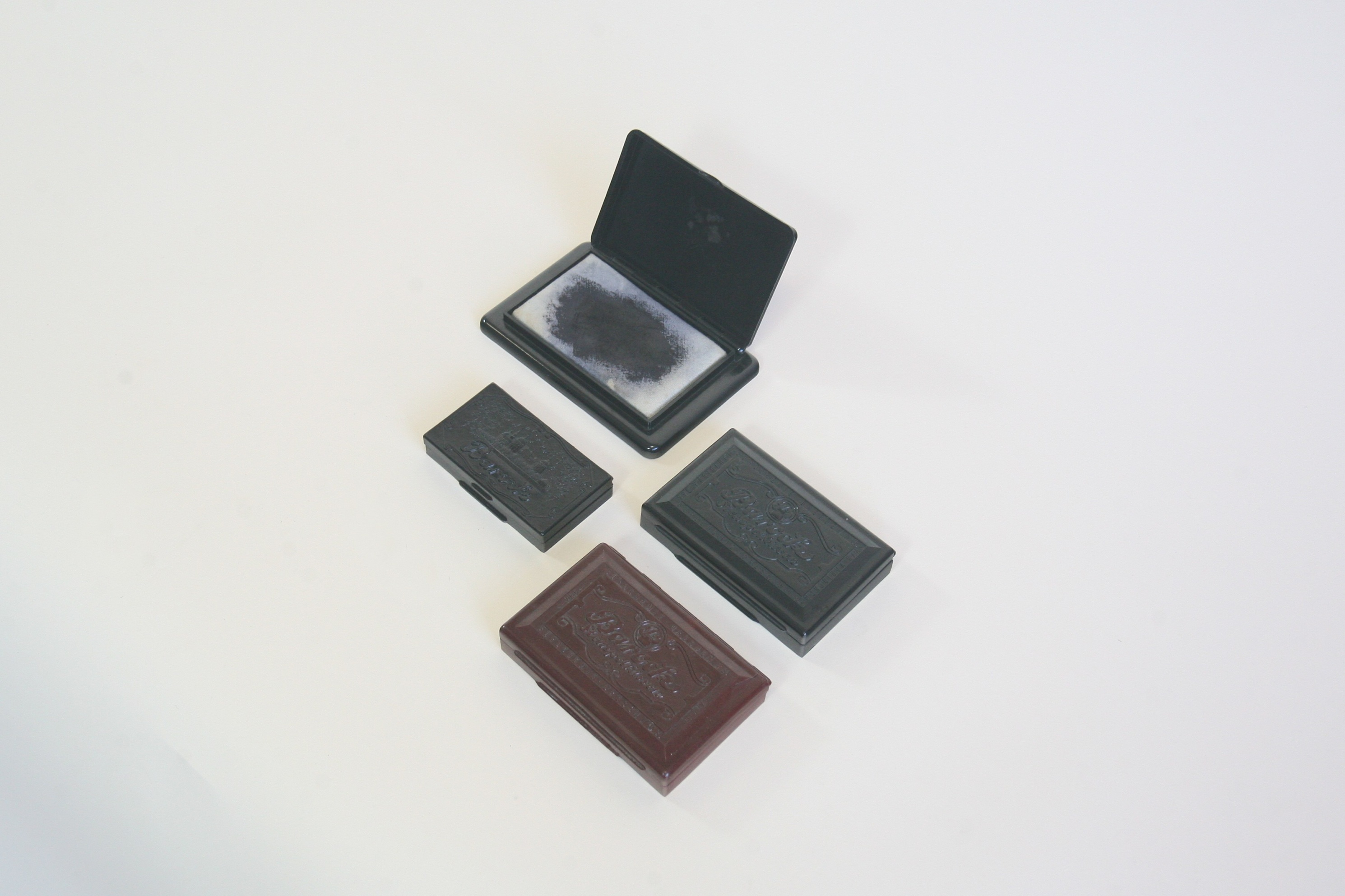3 Stempelkissen mit schwarzem bzw. weinroten Gehäuse aus Bakelit; Form: rechteckig; die Oberseite ziert ein Bild von Schloss Moritzburg und die Aufschrift "Barock", nur die Aufschrift "Barock" bzw. schließlich nur noch ein "B".
Die Marke "Barock" des VEB Bürochemie Dresden zeichnet sich, was das Design betrifft, durch einen geradezu klassischen Stil aus. Der Grafiker Hans-Günther Kummer prägte in den frühen 50er Jahren mit dem geschwungenen Barockschriftzug und den Reliefabbildungen barocker Sehenswürdigkeiten von Dresden das Erscheinungsbild von zahlreichen Büromaterialien. Später setzte sich mit der Zeit auch hier ein zunehmend sachlicheres Design durch.
en

